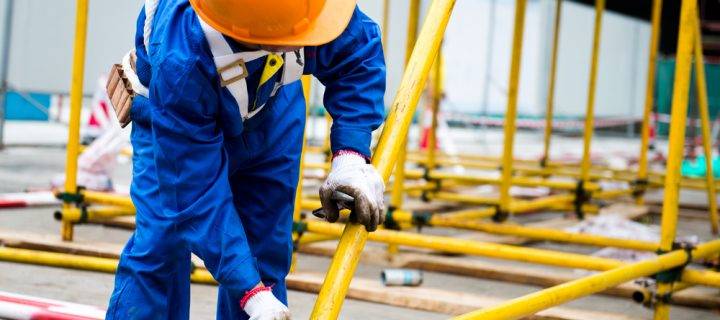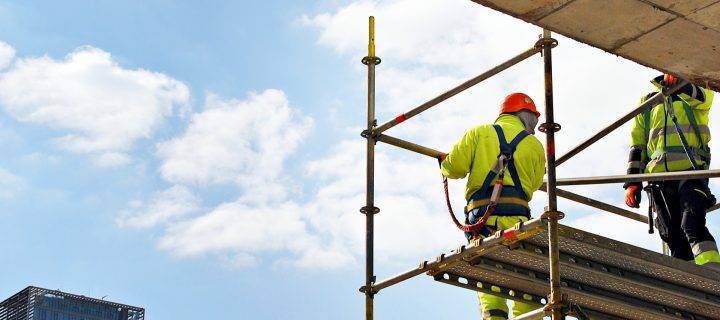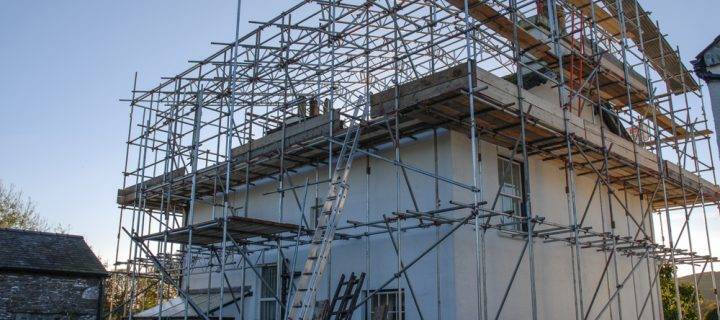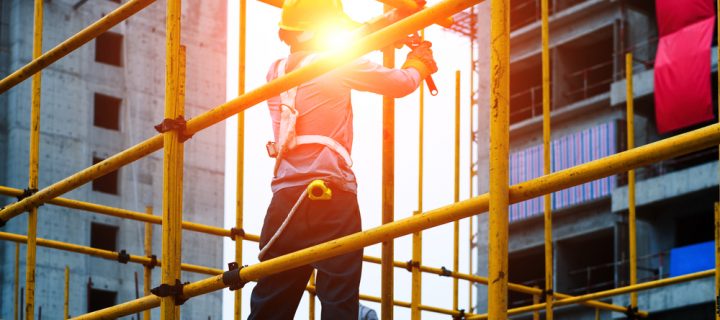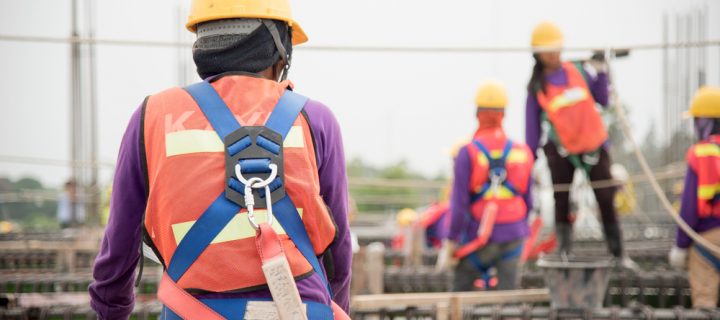Construction sites have helped to create a lot of the infrastructure we see around today, including towering buildings and multi-story homes – with all of these structures erected using scaffolding. Scaffold from companies such as Network Scaffold Services allows workers to reach new heights while performing different buildings plus maintenance and repairs. According to industry statistics from OSHA, 65% of all construction workers perform some type of work on scaffolds each year. Put simply, they are a staple on construction sites for many different projects. We will tell you all you need to know about using scaffolds on construction sites for this blog. What are the dangers associated with scaffolding? The most common injury associated with scaffolds, is falls, with some structures becoming unstable due to adverse weather conditions. Problems can also arise if the parts are not properly secured or attached during assembly. Besides falls, improper planking can lead to injuries, such as – Wear and tear due to exposure to the elements Improper or incomplete inspections Overloading of people or equipment How to stay safe Before using scaffold structures it is important to receive training from a competent and qualified person. During training, the instructor needs to go over the proper use of scaffolding and handle certain materials plus load capacity. Make sure that you pay attention and retain the information as if any new hazards arise you will be ready. Additionally to training, make sure the scaffold is inspected by a qualified professional before using. Remember to always wear a hard hat when working on or under a scaffold plus some sturdy work boots.’ Contact us with any questions If you have any further questions about scaffolding, please do not hesitate to get in touch with Network Scaffold Services. Our team of experienced professionals will be more than happy to...
Read Moreabout Using scaffolding on construction sitesHere at Network Scaffold Services, we know all about the best way to work with scaffolding. If you have recently decided to undertake a construction project that requires a scaffold frame, it is important to know as much as possible before you start. For this blog, we will give you five handy tips to ensure your building will be safe and look fantastic once work is completed. Having confidence in your scaffolding structure 1) Plan ahead – Planning ahead makes your job easier and ensures all your equipment to complete the structure is readily available. This means that you will not be missing any important pieces and your structure meets all health and safety legislation. Having a few sketches of the proposed construction allows you to visualise the structure, so when placing orders for materials you will get everything you need. Sketches will also help explain the structure to the scaffold team during a briefing. Planning ahead ensures you have met all necessary requirements plus you will save time and money. 2) Construction ground – The foundations and conditions of the ground when building a scaffold is very important. Construction on uneven ground can be dangerous. Making sure the ground is level means the scaffold can be supportive even when conditions are wet. 3) Safety is a top priority – Safety is our number one priority at Network Scaffold Services. Making absolutely sure structures are safe and stable limits the chances of accidents on-site. Protective equipment such as hard hats, long sleeves, gloves, and goggles need to be worn when working with the scaffold. Protective equipment also needs to be used on scaffolding, such as safety rails and access gates to prevent anyone from falling from a height. 4) Creating a safe structure – Using safety decking gives you a safe working platform. The decking fits tightly together and ensures materials will not fall through the cracks to any other level when in use. Scaffolding also needs to be tied to the property for maximum protection. 5) Inspect scaffold – Scaffolding needs to be thoroughly checked out and inspected before being used. An inspection log has to be completed daily, detailing deterioration or signs of broken or partially damaged...
Read Moreabout 5 Ways to stay safe using scaffoldingFlat roofs, like any other type of roof, do require maintenance to ensure you don’t need to have any repairs completed using scaffolding. Traditionally easier to maintain than a regular roof, flat roofs are asphalt-based and other similar materials. Depending on the quality of the original installation and the continued maintenance, flat roofs can last up to 50 years before they need replacing. Their lifespan is almost as long as tiled roofs, which last for up to 60 years. We would generally recommend checking your roof every spring and autumn, plus after particularly harsh weather, such as storms, strong winds or heavy snowfall. Fixing a flat roof If you discover any splits, blistering or damages, the surface will need properly examining before hiring someone to fix your roof. First, the area will need clearing of any damp or water, but if the surface has split or blistering has occurred it will need repairing. Flat roof repairs for splitting Splitting is quite a common problem for flat roofs, which occurs when the felt or asphalt material covering the roof suffer from cracks or tears. This does not just affect the outer appearance of the roof, plus it also allows water to get in through the gaps and into the interior of your property which results in leaks and damage from damp which can be difficult to fix. Splits in roof material can be caused by a number of things, such as wear and tear from exposure to the elements, stresses on the material, water pooling, freeze-thawing or poor workmanship when it was initially installed. If you have started to notice staining or the beginning signs of dampness on your ceiling or the tops of the walls inside your property underneath a flat roof, this can be a sign of splitting or other damage to the roof that is allowing water to seep in. Ponding on flat roofs Ponding can cause deep concave indents to occur around the roof, with stains and watermarks occurring on the inside of your property. These indents will continue to collect water, damaging material which over time allows water to begin to seep through into your home’s interior. This is usually caused by insufficient drainage, which...
Read Moreabout How to avoid scaffolding for flat roof repairsHere at Network Scaffold Services, we work with a number of different types of scaffolding, which are all used for different purposes in construction. For our latest blog, we will talk you through seven different kinds of scaffold available on the market and explain their uses. 7 Different types of scaffolding explained Single – This is commonly known as brick layer’s scaffolding and consists of standards, ledgers, putlogs, which is parallel to the wall at a distance of roughly 1.2m. The distance between the standards is between 2 and 2.5 metres, with ledgers connecting the standards at a vertical interval of 1.2-1.5m. Putlogs are taken out from the hole left in the wall to one end of the ledgers. Putlogs will then be placed at an interval of 1.2-1.5m. Double – Generally used for stone masonry, it is sometimes referred to as mason’s scaffolding. In stone walls, it is difficult to make holes in the wall to support putlogs. Two rows of scaffold will make this strong. Cantilever – This type of system has standards that are supported on a series of needles, that go through holes in the wall. This is known as single frame type scaffolding. For other types, needles are strutted inside the floors through the openings and are known as independent or double frame scaffold. Please note, care needs to be taken when constructing this system. Typically cantilever systems should be used in the following conditions – When the ground doesn’t have the capacity to support standards When the ground near the wall needs to be free from traffic When the upper part of the wall is under construction Suspended – A suspended working platform is based on roofs with the help of wire ropes or chains. This can be raised or lowered to the required level. The system is used for repair works, pointing and paintings. Trestle – For a trestle scaffold platform, it is supported on movable tripods or ladders and is generally used for work inside the room, such as paintings or repairs up to 5 metres in height. Steel – Steel platforms are constructed by steel tubes that are fixed together by steel couplers or fittings. Very easy to construct or...
Read Moreabout What are the different types of scaffolding?A typical image from a construction site is more than likely to conjure up a half-finished building with several workers navigating around a tall steel structure known as scaffolding. This is one of the most familiar aspects of any architectural job, but why is it so important in construction? We will examine this topic during this blog. Scaffolding is installed at the start of any construction project or maintenance work. It is a temporary platform, offering support and elevation plus it enables workers to carry materials and conduct their work during the construction process. This can include repairs and cleaning but primarily its purpose is to ensure the safety of workers while the building is being maintained or built. An added caveat is that it also provides a level of support to the standing structure. 4 reasons why scaffolding is essential We have put together 4 reasons why the construction industry relies on the scaffold so much – 1. Efficiency – Scaffold provides builders and workers with a safe and secure platform to carry out their duties. The structure allows them to manoeuvre around buildings of any shape and size quickly and more efficiently. Typically they take a single day to be erected, and will essentially reduce the time spent on-site, thus making the overall project more time-efficient. 2. Safety – Working at height carries an element of danger and risk, and as we have previously mentioned a scaffold platform gives workers a safe and secure setting to carry out their tasks whilst being stationed at a considerable height. Safety appliances such as barrier netting and fencing will also ensure the health and safety of the general public below the structure. These barriers will be able to catch any loose debris and create a completely safe and secure working environment for everyone involved. 3. Easy To Access – Scaffold gives builders and workers easy access to parts of buildings that would be difficult to reach otherwise. Using bespoke scaffold structures means it can be constructed in a way to match the building design. 4. Prime Position – One of the main advantages for builders or workers is that scaffold puts them in a strategic position to carry out their...
Read Moreabout Why is scaffolding so important in construction?
